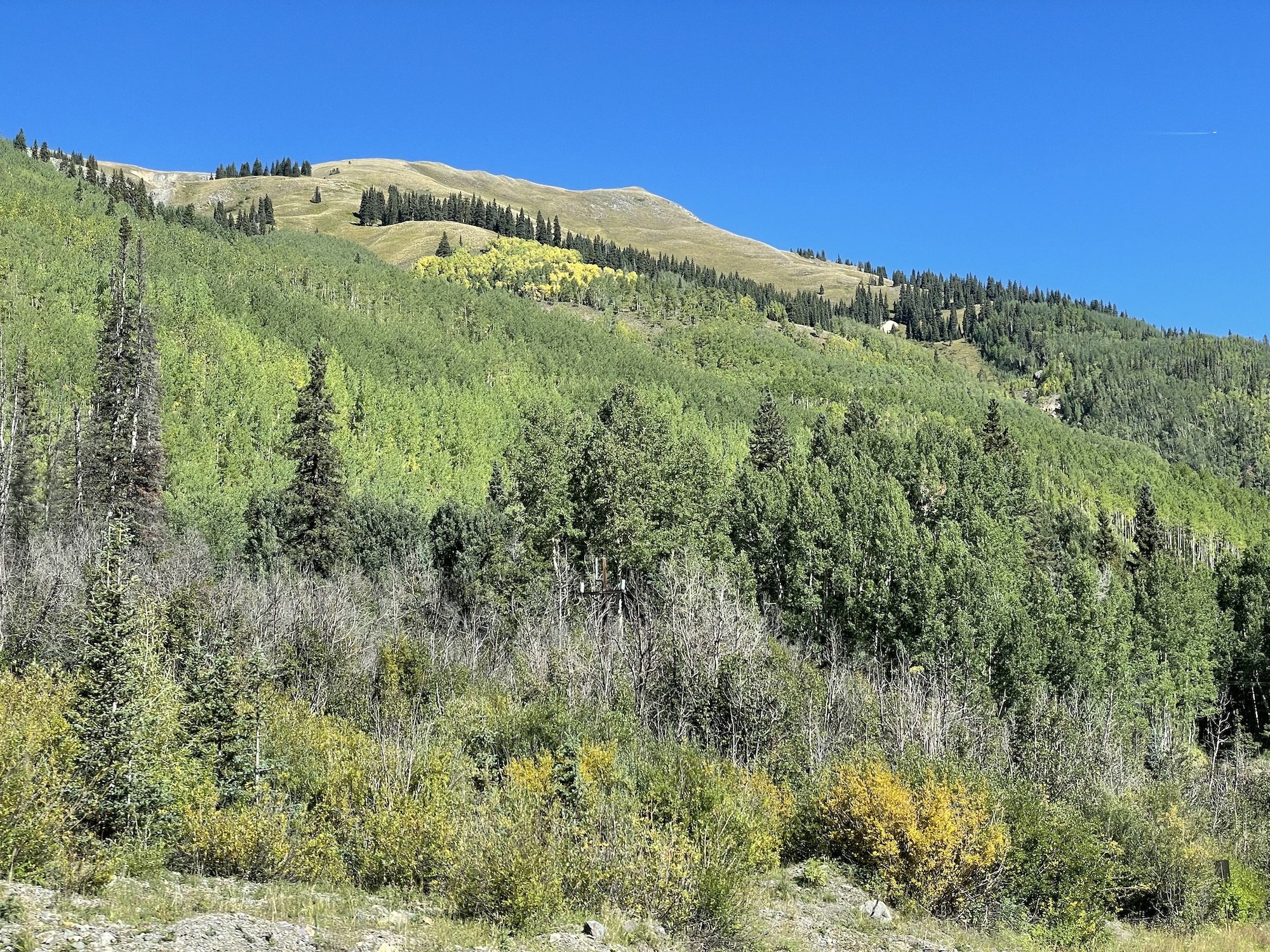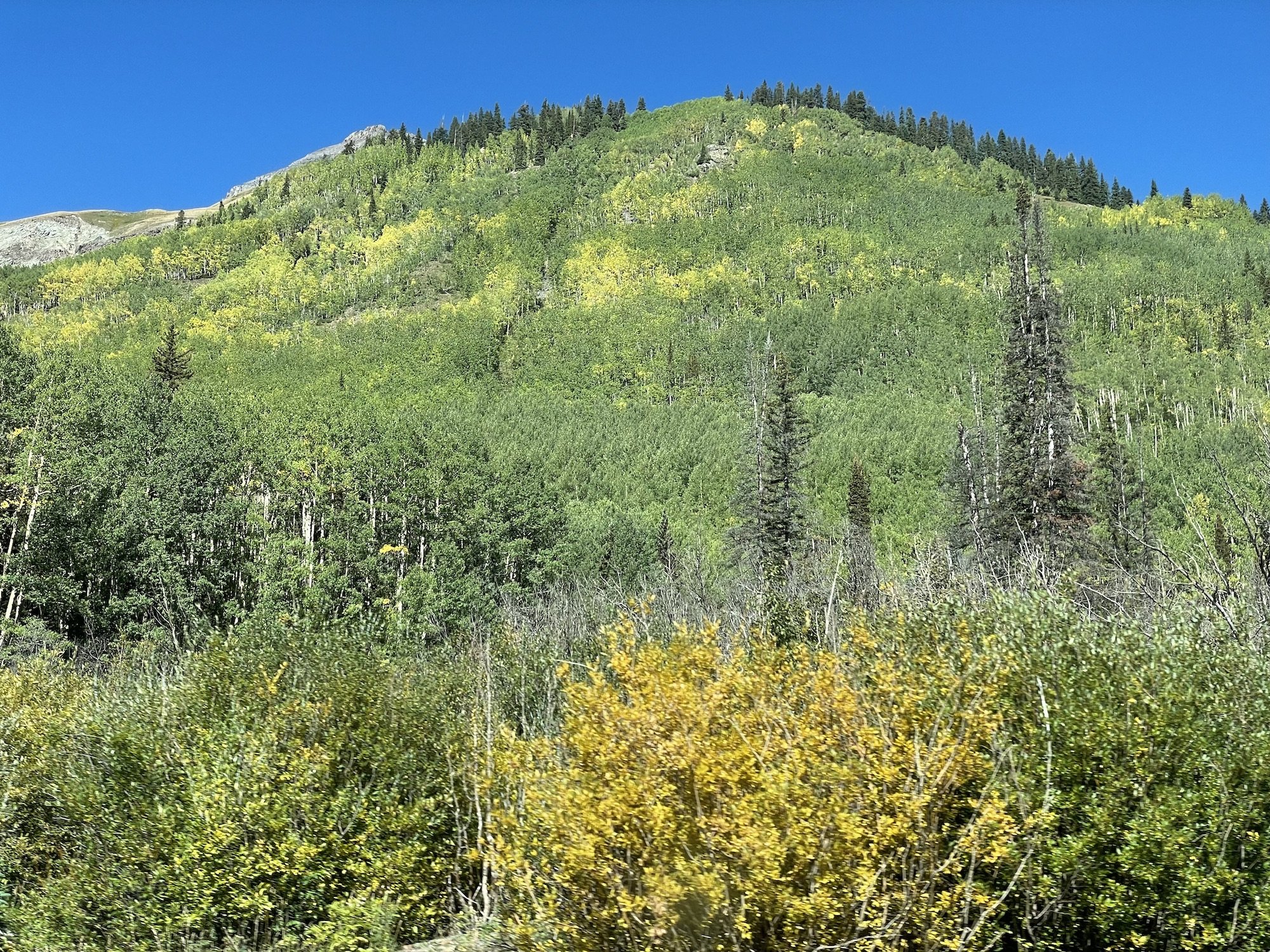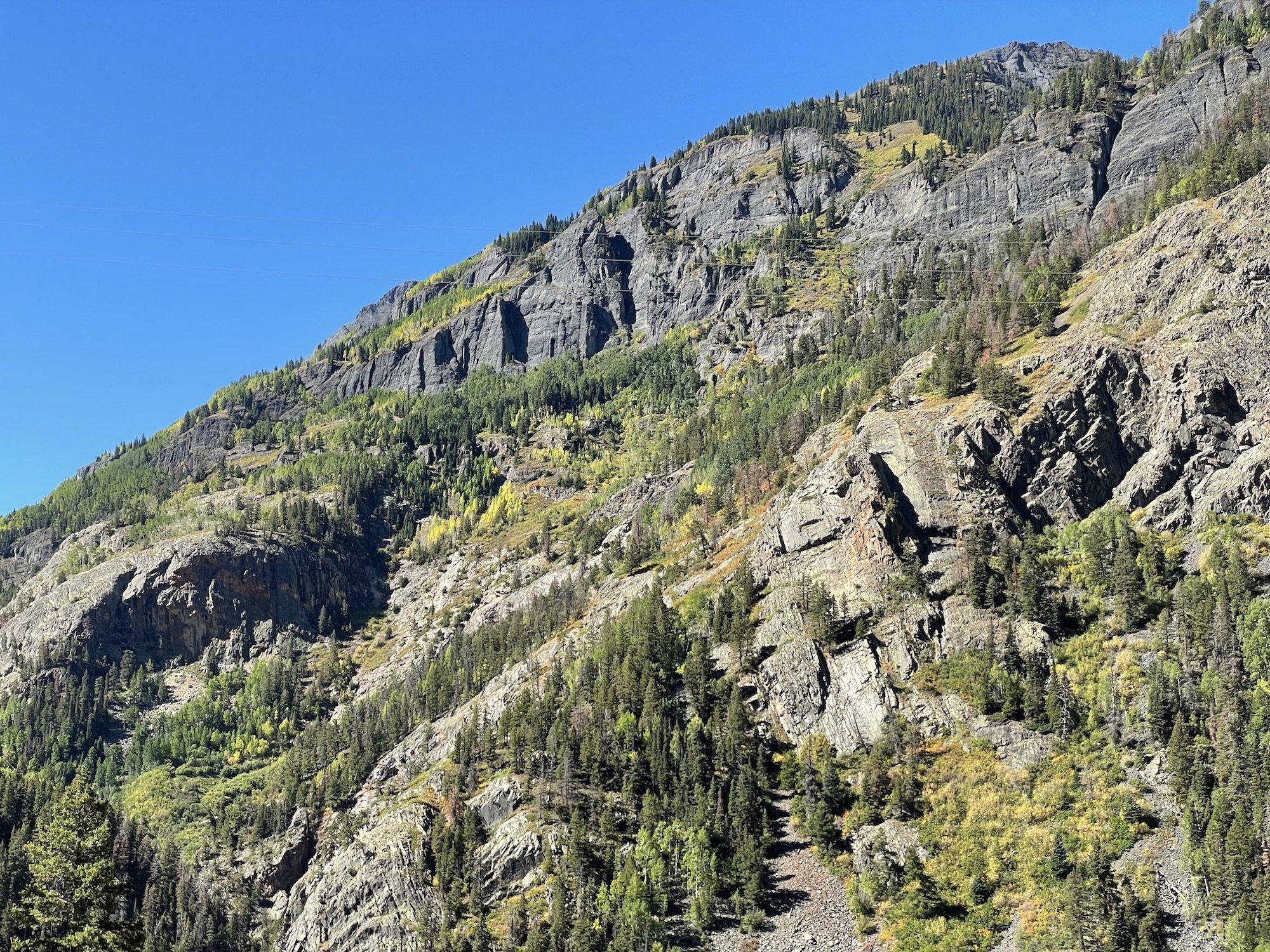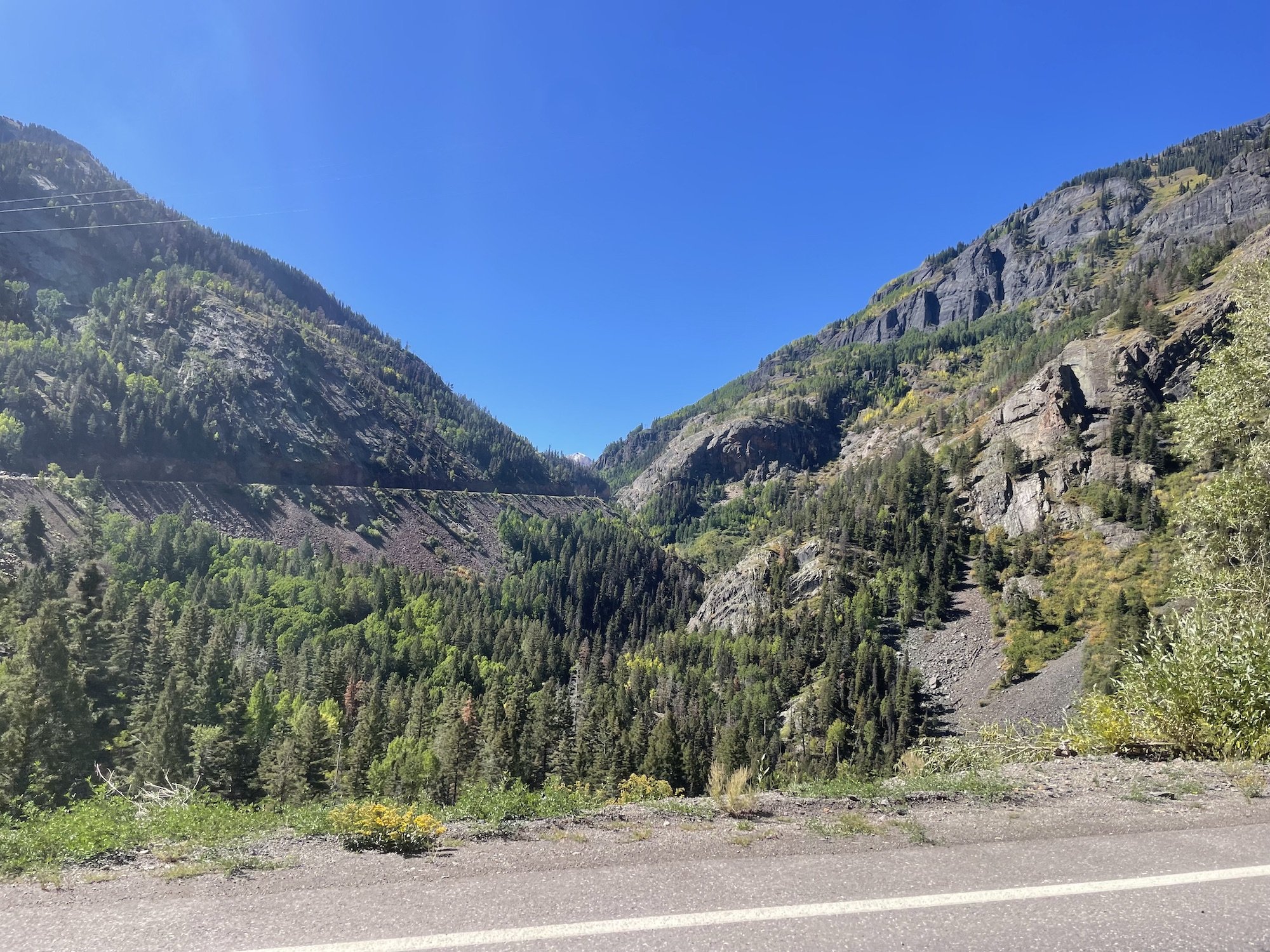Colorado Fall Photography 2023
A rainbow of Gambel Oak and golden aspens below snow capped peaks in the San Juan Mountains. 2021 (prints available)
The first trees in my part of the state are starting to turn yellow and that means mountainsides covered in golden aspens are hopefully not long behind. I first moved to Colorado in September of 2008 and seeing the incredible mountain landscapes covered in autumn foliage became my first truly passionate photographic pursuit. I became so obsessed with it I wrote 3 editions of a very popular fall photography eGuide to the state that I still get requests for (unfortunately I stopped selling it in 2018 due to public lands abuse). I'm clearly not the only one captivated by it based on how popular leaf peeping and fall photography has become in here. If you're reading this you're likely just as interested so hopefully my advice and predictions for the 2023 season are helpful.
First, for those unfamiliar, we don't have quite the incredible autumn color variety of the Eastern U.S. but the scenery more than makes up for it. Much of the state's mountains are covered in pine trees but there are small and big areas covered in swaths of Aspens that turn yellow to gold in the fall. In lower mountain evaluations, often right below or mixing with the aspens, scrub oak dominates that can turn yellow, orange, red, or sadly brown.
The snowpack from the previous year and the summer monsoon season have a big impact on fall colors in Colorado but the biggest factor is the weather in the month leading up to and during color change. For an ideal fall you want warm but not overly hot September days with cool nights near freezing and occasional moisture. A hot and dry September can mean vibrant but delayed colors and they're often short lived because that type of weather usually brings the biggest killer of autumn colors, wind! It can be the middle of the best season of fall colors you've ever seen but if a big windstorm moves in, which happens at some point most seasons, half the leaves or more can be gone in a day. A very rainy and cold September can also lead to an underwhelming fall with many leaves turning brown instead of yellow.
Much like the leaves change color from north to south along the East Coast, the aspens in Colorado change color from the north to south but with the added complexity of more elevation and dramatic mountain micro-climates. When you combine the climate, weather, and geography of the whole state you get a mosaic of autumn leaf change that differs every year. Generally speaking though color change starts at high elevations and northern latitudes first. Areas in the state that usually see the first signs of gold are Rocky Mountain National Park, high elevations around Steamboat Springs, Kenosha Pass, the Million Dollar Highway (550) in the San Juan Mountains, and other high mountain passes.
The typical season of autumn in Colorado is mid-September through early October; sometimes it can start as early as the 2nd week of September and the last groves can last past the 2nd week of October with canyon cottonwoods going even later. The Northern ranges tend to peak towards the end of September, the Central ranges the end of September/beginning of October, and the Southern ranges in early-mid October. High elevation passes will usually peak 2 weeks before the low-elevation montane and foothill zones nearby.
The weather can vary drastically everyday so come with every layer you think you might need. Temps can range from 10ºF to 80ºF. Bring base layers, rain paints and jacket, waterproof boots, trail runners, insulated winter jackets, thick gloves and thin ones. A high-clearance 4WD vehicle will allow you to get to more locations but isn't necessary at all as many of the best locations are right along paved or graded dirt roads. Chase the weather: snow, storms, fog, and everything in-between is your friend. If you know a snowstorm is approaching don't cancel your plans, check weather.gov and find the where the snow line will be. The right vantage point as the storm breaks and reveals peaks capped in white with dusted golden aspens can create some of the most powerful fall imagery of Colorado.
The best camera gear for fall photography in Colorado is everything you can bring! If you want more specifics I travel with a full-frame Sony a7RIII, 16-35 f/2.8, 24-105 f/4, and 100-400. That covers pretty much everything I could shoot and I use every lens each season. I have a polarizer for each lens and use them regularly as well as ND filters for waterfalls.
I'm reluctant to list best locations for fall colors in Colorado, as that's very subjective, but there are numerous popular areas known for fantastic fall scenery.
(These are just basic summaries and don't fully encapsulate the diversity of the each area.)
Rocky Mountain National Park
Not a lot of aspens in the park but paved access is easy/safe and the views are obviously stunning.
Steamboat Springs
Endless forests of golden aspens but not as many alpine peaks above them. The forests here are perfect for more intimate shots.
South Park and Summit County
Lots of big views with groves of aspens dotting the mountainsides. The extremely popular but beautiful Kenosha Pass is along 285.
Elk Mountains
Aspen and the Roaring Fork Valley, Crested Butte, Gunnison. Full of mountain scenery, iconic locations, and lots of aspens.
San Juan Mountains
Silverton, Telluride, Ridgway, Durango, Lake City. A former mining district full of 4WD roads and large aspen forests below big peaks.
Grand Mesa
One of the largest flat-top mountains in the world dotted with hundreds of aspen groves and rimmed by ancient volcanic cliffs. It's hard to photograph large grand scenery here but there's lots of small scene opportunities.
Leadville
High mountain passes, picturesque sub-alpine reservoirs.
Western Slope Canyons and Desert in late season
Canyons and deserts with riparian zones full of Cottonwoods.
If you're going somewhere iconic like the Maroon Bells and Rocky Mountain National Park, or close to Denver like Kenosha Pass, get there early! Not only do you want to have a good spot in the huge throngs of photographers that seem bigger every year if you have enough time to scout the location you might find a different angle or composition that takes you away from the groups and sets your images apart. Even better, if you've already shot the icons, avoid them! They've only gotten more popular and crowded and there's just so much more to see. If you can get out backpacking then you're not likely to encounter any other photographers for sunrise or sunset. If you can't make it far on foot, drive to the less visited fall spots like the Flat Tops Wilderness and the Sangre de Cristo Mountains. Hire a photo guide to take you to lesser known locations and make sure you're at the best spots at the right time.
Something you're finding all over social media now is "Best Hidden Gems" or some similar derivative. I absolutely hate this and find it disingenuous for many reasons. If it was actually a hidden gem then it's unlikely these influencers would know about it. If it truly is an unpopular beautiful location they got to enjoy it and now want to send everyone there for fake internet clout ruining the experience for you to discover it and enjoy that same "hidden gem" feel. You can do what I and so many other photographers have done: read maps, scour blogs, look at Google Earth, find new or old printed guide books (the most photogenic and popular locations are already listed everywhere online!), ask locals, ask friends, or just head out with an area in mind and explore!
Lastly here's my insights and predictions for the 2023 Colorado fall season. Right now, September 14th, I'm sitting in Coffee Bear in Silverton while writing my first draft and it's raining pretty steady after a warm and foggy morning. The 10-day forecast as of publication, September 18th, shows a chance of rain or snow and dry days throughout. The long-term forecast discussion has more in depth info but so far it looks like this fall will have a good mix of weather.
Up to this point in the early season we've had wonderful snowy peaks and misty conditions with some tundra fall colors. It's hard to predict what that will ultimately happen but if the current weather continues it might not be the best year for autumn colors but it won't be the worst either; some places will be phenomenal while others lackluster. We're currently behind the normal timetable for change but maybe by a week at most. Some hillsides around Silverton are starting to turn, there's patches along Red Mountain Pass, and almost nothing in lower elevations. There’s not a lot of fall color out there yet so no need to worry you’re missing anything!
I do have some concerns about wind events, as we've been getting them regularly this summer, and I have a bad feeling this season might end abruptly when it does; but I hope I'm wrong! To play it safe right now I would plan on visiting most places only a few days after normal peak in-case things accelerate and just be ready to change your destination. There's plenty of ways to keep current on conditions by checking Facebook groups and following people and hashtags on Instagram. When I'm out photographing I'm usually sharing stories on my IG account where you can see conditions while I'm traveling.
TLDR: Not much color yet, this fall is running later than normal, but all signs point to good colors if it doesn't rain too much or get too windy.
If you read all that thanks for taking the plunge on my new website and please leave any comments or questions below. If you want more help getting fall photos this season I'm available for private guiding and workshops, more info can be found here: https://jasonjhatfield.com/private-guiding
UPDATE: A small gallery of images from Highway 550 Silverton to Ouray. These were the conditions as of 9/15/23






